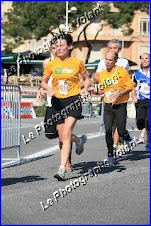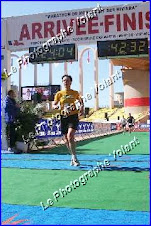Brown sugar, a staple in most American kitchens, is not, I discovered this week, a staple in French kitchens. Searching supermarkets for what is known as sucre Vergeoise blonde, a key ingredient in my famous chocolate chip cookies, therefore this week became my own quest for the culinary Holy Grail.
It all began when I visited Corsica last month with Priscilla. During our week there, we drove to the town of Conte, to visit with one of her Alte Voce singer friends, Rosanna (See article Alte Voce). Rosanna is a lovely, warm, engaging and vibrant woman, and during our visit, I learned that she is also a very good baker. She offered us samples of her cookies while we were there, and I complemented her, letting her know that I was a cookie baker too. She became quite animated, and asked for a cookie recipe from me. She brought me a piece of paper, and I instinctively wrote down the recipe that most of us grew up knowing as Tollhouse Cookies, the recipe listed on the back of a bag of Nestle’s Semi-sweet Chocolate Morsels. [In the last decade or so, myriad varieties of so-called chocolate chips have become available, as the major confectioners’ marketing departments search for additional sales (e.g., peanut butter, chocolate mint, dark chocolate, white chocolate, minis, etc.), but the original ones from my childhood were the semi-sweet, melt-in-your-mouth-gooey-chocolate pieces in cookies hot from the oven, from the yellow Nestle’s bag.]
I wrote down the chocolate chip cookie recipe from memory (I have submitted my own version of the recipe to more than one cookbook compilation over the years, with my own twist of substituting Grand Marnier for vanilla extract), and gave the paper back to Rosanna. She started reading it and I realized it needed to be in French, of course (duh), and then seconds later, realized it had to be in metric measurements if she was going to be able to use it. Hmm, not in my repertoire, the measurements, that is. Rosanna was a little deflated, but we went into her kitchen to see if she had a measuring cup that had ounces by any chance (hard to imagine, however) marked on it. Her measuring cup was an interesting beaker-like plastic cone with markings on it – but not in ounces, but milliliters. Back in her sitting room, I was able however, to annotate the recipe with the names of the ingredients in French – most of them. By the time we were getting ready to leave, I was promising (apparently this happened between Priscilla and Rosanna in French around me, I didn’t actually understand the promise at the time) to send my hostess the complete recipe in French with understandable measures.
Before we left, I asked Rosanna for one of her cookie recipes. She proudly whipped out a piece of paper and wrote down six ingredients. Et viola! She described, with some prompting, what was to be done with the ingredients, so I made a few notations on the piece of paper. We talked about the temperature of the oven (“the highest heat possible” – another lesson learned about French appliances; ovens are not as sophisticated as American ovens; the temperature dial on my oven here is not in degrees, but in digits, 1 – 9, you figure it out!), and upon learning that I had an electric oven, Rosanna declared, “It is not possible to make these cookies in an electric oven. I have tried.” (Spoken in French, I believe.) But such a declaration was not to be a deterrent to my own interest in trying to recreate her cookies!
A few days after we got back to the mainland, Priscilla emailed me a link to a website that had American/European conversions for kilos, pounds, ounces, etc. “For your recipe for Rosanna” she wrote. I looked at the site, and tried to make conversions between cups and kilos, but found it a little frustrating. I took off for my Paris trip that week, so I forgot all about the recipe for awhile. Then a week or so ago, before I left on my trip to the States, Priscilla let me know that while she was with the Alte Voce group the previous weekend, she had heard Rosanna tell someone that she was going to get an American cookie recipe from me. Whoops! I hadn’t realized I was on the hook. I mobilized into action.
One of my purchases while I was in the States was a box of brownie mix, as my friend Erick had expressed a wish for brownies when I asked if there was anything I could bring him back from my visit. Having bought the mix, though, I realized that I needed a cup measure, and was pretty sure that I would not find one of these in Nice. I consulted with my mom, who found among her “things” in the house, a nest of cup measures (one-quarter, one-third, one-half, one), which was helpful, but we also talked about finding a cup measure with liters and ounces. She was sure she could find one in the Dollar Store, she told me. So, on my last day in Amherst, while I was finishing my packing to head back to Nice, Mom headed out on her quest to hunt down a cup measure. She returned victorious (“the last one there!”) with a plastic cup-and-a-half measure, with milliliters listed on the other side. Stage One, appropriate utensils, (partially) completed.
A few days later back in Nice, now equipped with a way to measure ingredients, I went back to my recipe with the earlier calculations with the measurement conversions. But in looking at the calculations (1 gram = .035 ounces), I realized that simply converting ¾ cup of sugar to grams was going to come out with a pretty weird number. It became evident to me that I would have to experiment with ratios, using the European measures, rather than doing a strict conversion. This began to make more sense once I started shopping for ingredients. A cup of butter is easy to figure out in the States, because butter is sold by the pound, and the tablespoon measurements are frequently listed on the side of the bar of butter (and most bars of butter are ½ cup). But butter in French supermarkets is sold by the gram, typically 250 grams, and not in bars, and not carrying any notation showing 100 or 125 grams for easy measuring.
But figuring butter was my base, and that 250 grams was more or less a cup, and that the sugar ratio in my recipe was 1 to 1.5, I started coming up with my recipe in grams. The new “European” cookie recipe looks like this:
Traditional = European
¾ cup white sugar = 175 grams sucre blanc
¾ cup brown sugar = 175 grams sucre Vergeoise blond
1 cup butter = 250 grams beurre
2 eggs = 2 oeufs
1 tsp. vanilla extraact = 1 cuillère à café vanille (Arȏme Naturel de Vanille liquide par Vahiné)
2 ¼ cups flour = 550 grams blé
1 tsp. baking soda = 1 pc. levure chimique
½ tsp. salt = ½ cuillère à café sel
1 cup chocolate chips = 2 pc. Pépites Créatives (chocolat pour pâtes à gâteaux) (2 x 100 g)
The unfamiliar sounding ingredient in this list was the “levure chimique.” I would not have known what exactly to look for with regards to a baking soda substitute, because baking soda does not exist on French store shelves. But the recipe Rosanna gave me had “lev. Chimique” listed, and I was able to find the packets of this leavening agent (really, not quite sure what it is, but presumably what we call baking powder and/or soda) in my local supermarkets. Stage Two, workable recipe, complete.
So, I was ready to experiment making cookies with my “new” measurements. I headed out to buy ingredients. (Actually, the ingredient search was coincident with my figuring out measurements, but I am telling the story serially here.) As I have written, shopping in supermarkets is a pleasurable pastime for me, and I can spend hours (literally) shopping in French supermarkets these days – actually “shopping” is not the right word, “cruising aisles and looking at items on the shelves” is more like what I do. But given my experience cruising aisles, I knew my ingredient shopping would require a dictionary in hand. Experience had shown that buying something without knowing exactly what the wording on the label says could result in a surprise (if I had known that volaille was another word for poultry, I would not have bought that particular box of tabouli mix, for example).
White sugar, flour, butter, even the levure chimique, were not hard to find in my local supermarkets. What I became stumped with was finding what I knew to be brown sugar. I went to two different stores, without success, and then consulted with my friend Christiane, who said, of course, they must have it in the store. She accompanied me to a Monoprix on the main drag in Nice, and we found the sugar shelves, and of course, there were lots of “brown” sugar packages, including sugar in cubes or pourable sugar packaging. They call it “sucre de canne.” But I told Christiane what I was looking for was not on the shelf. She was puzzled; I described to her a moist brown sugar that could be packed into a cup measure. She said she didn’t know what this was. Good, I wasn’t going crazy.
That night on the phone with Priscilla, I bemoaned my failed attempts to find brown sugar. “No, No, they do have it here!” she said animatedly. “I saw it in my local grocery here the other day.” But she agreed that this was not an item that was mainstream in French cooking. Then she gave me, in her own Priscilla way, the exact name of the thing I should be looking for: Beghin Say Sucre Vergeoise Blond, or Brun. So equipped with a name, I headed out to the local Italian Cocci Market around the corner from me the next morning. Et violà, sitting there looking at me from the shelves was a small kilo package of sucre Vergeoise Blond (different producer, but same product). Success! Now I could make real American cookies. Stage Three, ingredients assembled, complete.
A quick word about the chocolate chips. I now live in a country where there are almost full aisles of chocolate in just about any food store. They love real chocolate here; America makes feeble attempts at chocolate products in comparison (though things are getting much better than they used to be. Trader Joes has helped revolutionize chocolate bar choices. Bringing chocolate back from Europe is no longer the first request I get from family). That being said, given that chocolate chip cookies, and cookies, basically, are not in high demand here in the land of the baguette and the croissant, I had only one choice for chocolate chips in the supermarket. My recipe above is specific, simply because those are the only chips I found, in every single store I visited. In my cruising of the baking aisles, I did find varieties of instant chocolate chip cookie mix, though, and I actually bought a bag of it to try and see what the French think of as chocolate chip cookies. The comparison between my American cookies and the French wannabes was striking – the brown sugar difference, Priscilla and I decided.
The purchase of the French cookie mix, while a culinary disappointment, was fortuitous, as the instructions on the back were very helpful as I was trying to write instructions in French for Rosanna. French phrases for cooking are not exactly intuitive. Here’s how instructions for my cookies turned out:
Prechauffez votre four th. 9 (200° C)
Dans un saladier, mélangez de beurre mou avec de sucre blanc et blonde. Ajoutez des oeufs et vanille et fouettez à nouveau.
Mélangez tous les ingrédients sec (farine, lev. Chimique, sel) et ajoutez dans le saladier avec les autres ingrédients.
Ajoutez finalement de pepites de chocolat et mélangez sans trop pétrir.
Avec deux cuillères à café, laissez tomber des petits boules en lignes sur une plaque à patisserie beurrée, bien espacées.
Faites cuire 10-12 minutes jusqu à ce que les cookies soient blonds (un petit marron, aussi bien). Une fois cuits, laisses-les tiédir avant de les décoller.
I was ready to bake. Almost. Although my furnished apartment’s kitchen is a pasta lover’s paradise (courtesy of the Italian owner – lots of big pots for cooking pasta), I found it woefully underprepared for a baker. So, during my trip to Carrefour to purchase my comforter and bedding last week, I also went in search of cookie baking fundamentals: baking sheet, spatula, and a strong wooden spoon for mixing. These were fairly easy to find in the aisle with kitchen accessories. I also noted on the shelves nearby the baking paper that I was pretty sure the French used (and shown on the side of the box) for baking in the oven. This practice from the old World has definitely left the American kitchen. I decided the good old American cookie sheet greased with butter would do for me. Stage One, appropriate utensils, complete (as far as I knew at the time!)
The ready-made mix purchased also at Carrefour was my first cookie effort. Using my new utensils, I was able to produce the chocolate chip cookies as instructed on the back of the package. They looked OK, the oven worked fairly well. I was ready to make my own recipe.
Actually, at this point, I made Rosanna’s cookies. Here’s what she wrote down that day to give me:
1 kilo Farine
300 g Sucre
250 cl hile
250 cl vin blanc
2 p. levure chimique
1 p pincée sel
I had found all her ingredients easily, and set about making the dough. Realizing that a kilo was a lot of flour, I planned to cut the recipe in half. But I started to pour out the liquids in the full measures (ml incidently, not cl, as she wrote down) by mistake, so I plunged ahead with the full recipe. And yes, it was a lot of flour. As a baker with experience, I also realized that the wooden spoon was not going to be helpful, that I would have to knead the flour (a total of 9 cups!) into the mixture. Kneading the cookie dough reminded me of baking gingerbread at Christmastime; one of my more pleasurable times in the kitchen, but also lengthy – kneading 9 cups of flour into a sticky ball of molasses and brown sugar takes time! And Rosanna’s recipe was just the same, although the dough was not so sticky (no brown sugar in her recipe).
My notes from my conversation with Rosanna about the cookie making was that one should roll out the cookies and sprinkle with sugar before baking. At this point, I realized that I did not have all the utensils I needed; I had not purchased a rolling pin for rolling out cookies. Hmm. It was McGyver time; time to improvise. I took a glass (luckily I had one thick enough not to break on me), and to the best of my ability, “rolled” out the dough to ¼ inch thickness or so, cutting the dough into squares and then putting them on a baking sheet. At this point, I saw the value of the baking paper I had rejected in the store, as I sprinkled sugar on the cookies and watched the crystals drop between the cookies onto the baking sheet. This would make a messy cleanup once the sugar baked on the sheet, I thought. In my next batch, I sugared the cookies before placing them on the sheet.
While not exactly pretty, and while missing that last cup of flour (I got tired of kneading!), the cookies turned out tasty. Like shortbread, and very enjoyable with jam or jelly and a cup of hot coffee or tea. Stage Four, Rosanna’s Canistrelli Corsican Cookies, complete.
Finally, it was time to make Margarita’s Chocolate Chip Cookies. I decided to make a half recipe – this time I knew the measurements well enough! – as I now had two pots full of cookies sitting on my refrigerator of which I was not looking forward to being the sole consumer. Knowing the recipe like the back of my hand, and having all the ingredients I needed, the process was quick and easy. The oven cooperated, the cookies came out browned and sugary and tasting like they should. I am feeling confident that with my French recipe, Rosanna can do the same. Here’s hoping!
* * *
Rosanna’s Canistrelli cookie recipe (in English, with American measurements)
9 cups flour
1 ½ cups sugar
1 cup vegetable oil
1 cup white wine
1 tsp baking powder
½ tsp. salt
Mix all ingredients together in a bowl, with half the flour. Turn mix onto board to knead in remaining flour. Roll out dough in ¼ inch thickness, cut into squares and put on greased cookie sheet.
Cook in hot (375-400 degree F) oven for 10-15 minutes.
Saturday, October 18, 2008
Subscribe to:
Post Comments (Atom)





















































































































































































No comments:
Post a Comment